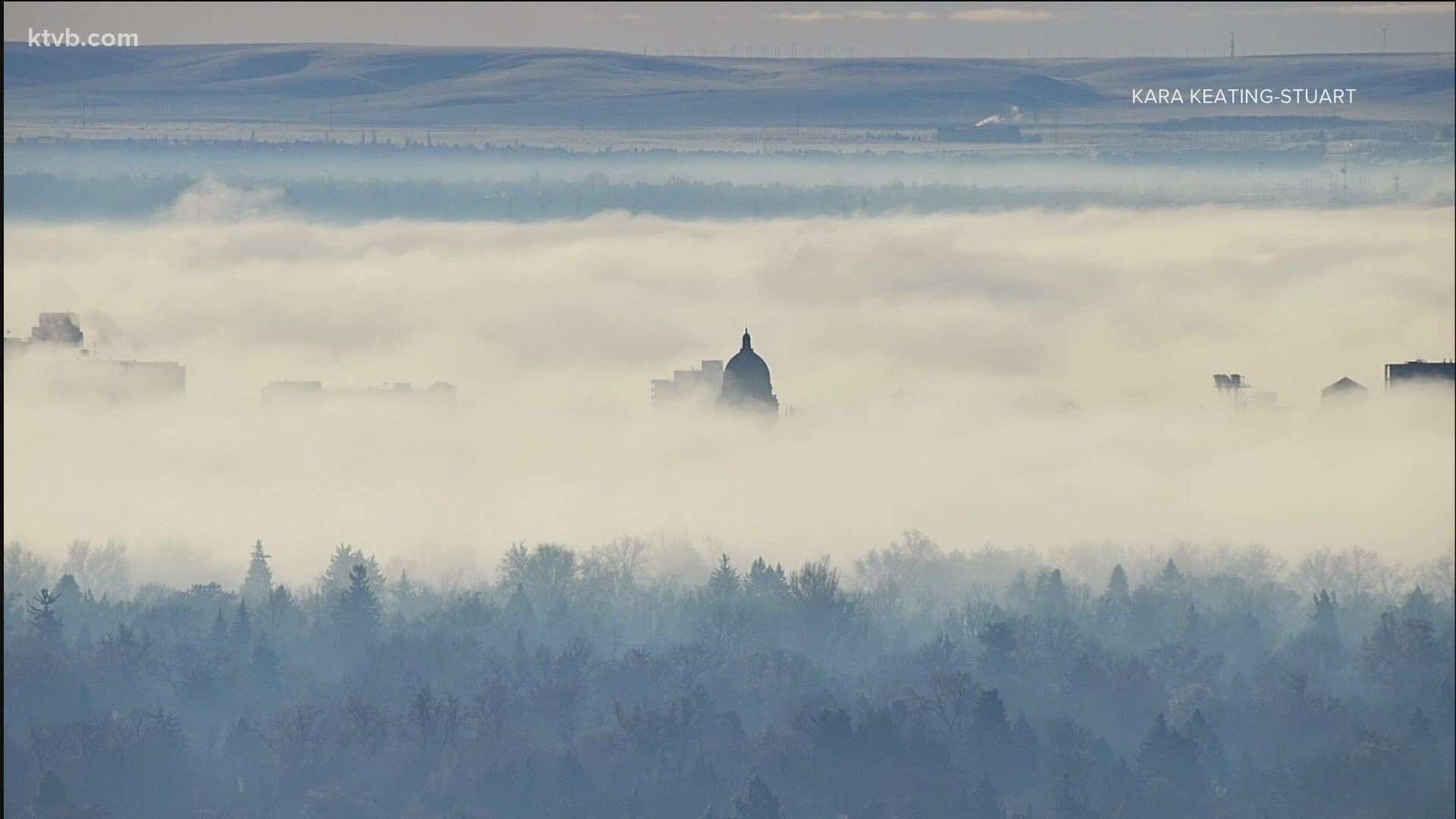BOISE, Idaho — Living in Idaho means getting to enjoy a beautiful landscape.
The state has mountains, valleys, farmlands, forests, rivers, lakes and more - and some of these features affect the weather we see.
Valleys, in particular, play a major part in setting up an inversion.
Common in the winter and summer months, inversions bring with them low air quailty or a fog that just keeps hanging around.
KTVB Meteorologist Rick Lantz says that although those are both things that can happen with an inversion, they are not what an inversion is.
"An inversion is when an air mass above us gets flipped upside down, and instead of getting colder as you rise in elevation, it stays the same or gets warmer," Lantz says.
That cold, dense air then settles into lower elevations, and a layer of milder air goes over it like a lid — which doesn't allow the air to mix.
Lantz says there are a few ways an inversion can break down and move out.
"A storm can bring wind down to the valley floors and stir up the air, or colder air can move in and force the air in the valleys to rise," he explained.
While inversions can lead to other events like heavy fog, pollution build up, or low visibility, that is not always the case. Sometimes the inversion can break down almost as quickly as it forms leaving Idahoans to get back to enjoying beautiful blue skies.
Watch more weather:
See the latest weather forecasts and news in our YouTube playlist:

